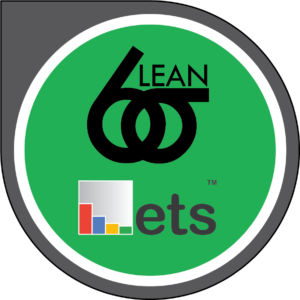
That’s an easy question that has a controversial answer. There is really only one “Six Sigma” with the differences being attributed to the scope of its deployment. Whether your organization is involved in Lean, Transactional, Six Sigma for Service, or Agile, these terms like the name Six Sigma itself, were coined to refresh the concept they hoped to replace. Management by Objectives (MBO), Zero Defects, Total Quality Control, Total Quality Management, and then Six Sigma represent successive concepts building on their predecessors. For example, although the “Lean” movement became prominent in the U.S. during the late 1980s, many Lean tools, such as 5S, can be directly traced back to the Ford Company’s CANDO method of the early 1900s, and earlier still to Frederick Taylor’s Four Principles of Scientific Management. What they all have in common is the goal of improving total organizational performance. While all claim to be better than the other, they share many of the same analytical and collaboration tools.
The bottom line with any of these concepts is that they all require leadership engagement, collaboration, and management by fact. None of these approaches can stand alone and must be complemented by a holistic management system, which is where the Baldrige Criteria for Performance Excellence comes in. The Baldrige framework addresses the scope of “what” an organization should do to be successful but is not prescriptive. Six Sigma is prescriptive in terms of “how” things should be done. By combining the “what” and the “how,” organizations can achieve and sustain success. By doing only one or the other, gains may be achieved but not sustained.
Besides the degree of deployment, another danger presented by these various approaches to organizational improvement is their focus. By emphasizing defect (DPMO) and waste reduction, organizations cannot help but to put quality and customer value on the backburner, despite claiming they don’t. What should be remembered is the following:
- By improving quality (perceived customer value) and timeliness, costs will be reduced.
- The organization’s mission and Key Performance Indicators should drive the improvement If leaders are not engaged or focused only on costs, then organizational-level improvement will be limited.
- Increased customer satisfaction and revenue growth do not result from defect and waste reduction, which are intended to reduce customer dissatisfaction and expenses. While reducing complaints reduces dissatisfaction, increasing value increases satisfaction.
A successful leadership-driven “total organization” approach will focus above the line (revenue growth) and below the line (costs). Many of the large banks, insurance companies, and other organizations which fell victim to the last economic crisis had extensive Six Sigma initiatives in place. Where was the emphasis on growth, customer value and retention, and prevention? Maybe the term “Total Quality Management” wasn’t so bad, after all.
